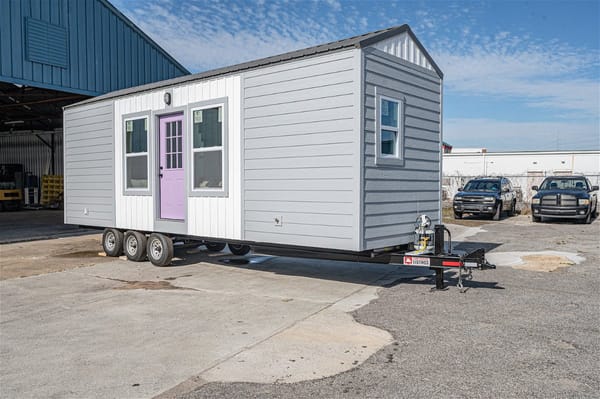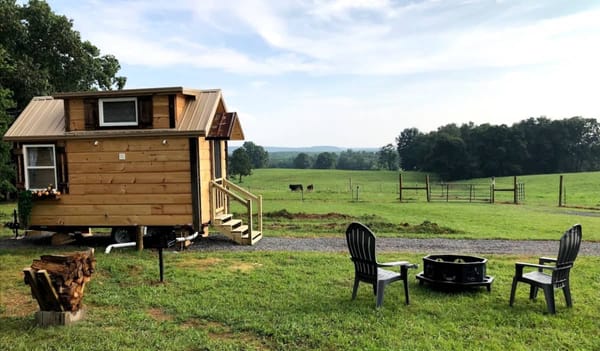Where Does Used Water From My Tiny House Go?
Once you have decided on how you'll get water to your tiny house, the next obvious question is...where will it go?

In a recent post, we discussed the options available for water sources for your tiny house. As we touched on, there are many ways to get water to your tiny house. This is mostly dependent on where you'll be placing your tiny house and which option(s) make the most sense for your situation.
Now that you know where to get water from, the next logical challenge to tackle is where it will go. Very similar to your water source, where to put your wastewater depends on your situation and where your tiny house will be located.
In this post we'll go over some popular options and later in the post, some more creative, less traditional options.
Blackwater and greywater, or just greywater?
The first thing you'll need to decide is if you only plan to handle greywater or black greywater and blackwater.
When your tiny house is setup to only dispell greywater, where to put your spent water is much less of an issue.
If you've lived in traditional housing all your life, there's a good chance you don't know greywater and blackwater are. Here's a quick breakdown.
Grey water is all water you've used in your home that doesn't include human waste. For example, the water you use to wash dishes, take a shower, wash clothes, wash your hands, etc.
Black water is water that contains human waste. In other words, poopy water that you've flushed down the toilet.
Compost toilets are a very popular option for handling your black water because they negate the need for a septic tank or sewer system. We can dive the subject of compost toilets in another post, but suffice to say that it you use a compost toilet, handling your used water becomes much much easier.

Municipal Sewer
In some cases, your tiny house may have access to municipal water. This means there are sewer lines in place that when you use any water, it goes directly to the sewer and is then handled and sanitized by a local entity. This can come in the form of tying into existing sewer lines, or having them installed for you.
The upside of municipal sewer is that you flush and forget. In most cases, when you have access to sewer, you'll also have access to municipal water. There are rare cases where sewer is available, but municipal water isn't and you'll need to have a well dug. Another upside is that you do not have to worry about the expense of installing and maintaing a sepctic tank.
The downside of municipal sewer is the ongoing expense. When you flush a toilet, take a shower, wash dishes, anything that dispels water from your home, you are charged for having that water sanitized by a local entity.
Septic Tank
From the surface, a septic acts exactly the same a municipal sewer. You flush a toilet or take a shower, and the water goes underground. The difference being, with a septic tank the water stays on the property.
Water pours into the septic tank and then is dispersed to be broken down through leach fields connected to the sepctic tank.
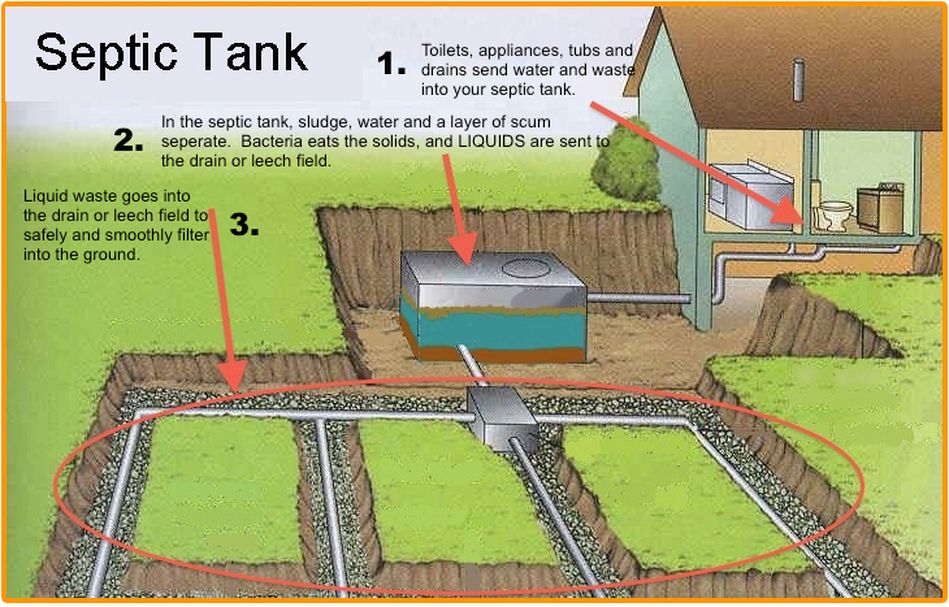
A septic tank handles both grey and black water and there are no ongoing expenses with the exepction of maintenance and eventually replacement. In decades past, septic tanks were often made with cinder blocks which eventually wore down from being exposed to soil and moisture. These days plastic septic tanks are the first choice and can last a very very long time before they need replacing.
I have regularly seen tiny house dwellers build their own DIY septic tanks. This could be something as simple as a large plastic container with holes punched and place in gravel underground. This approach of course assumes you have good ground drainage in your area.
Grey Water Only
If you elect to use a compost toilet for your tiny house, this means you only need to handle grey water. Assuming the use of only all natural, biodegrablde cleaning products, it's feasible to let your grey water run directly on the ground, down a hill or anywhere that the used water will not come in contact with your daily activities. This of course should be done at your own discrection.
I have also seen where grey water is purified by being fed through several planted pots in a cascading fashion. The nutrients from the grey water feeds the plants and the soil the water travels through cleans much of the materials in the water.
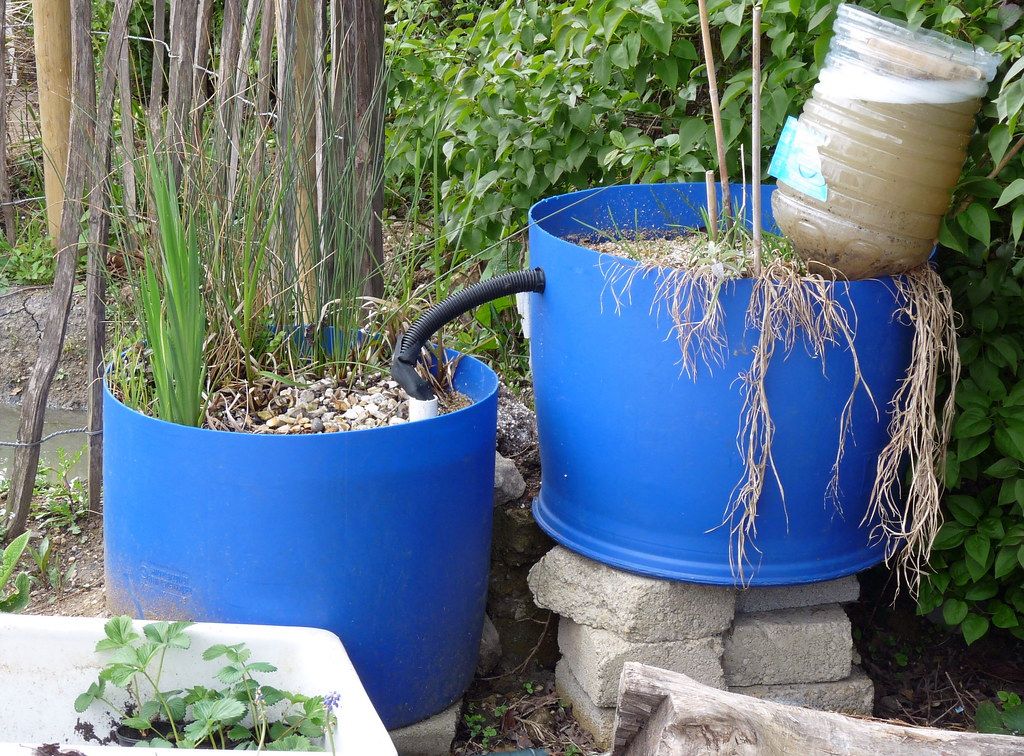
The purified water could be used for things such as watering your plants or washing your car. Some people take the process even further and reuse the water all-together again in their homes.
Portable Holding Tank
Another approach that's often used is a portable holding tank. The tank simply catches all of the water that is used from the tiny house. When the tank is full, it can be carried to wherever the appropriate place to dump it is located.
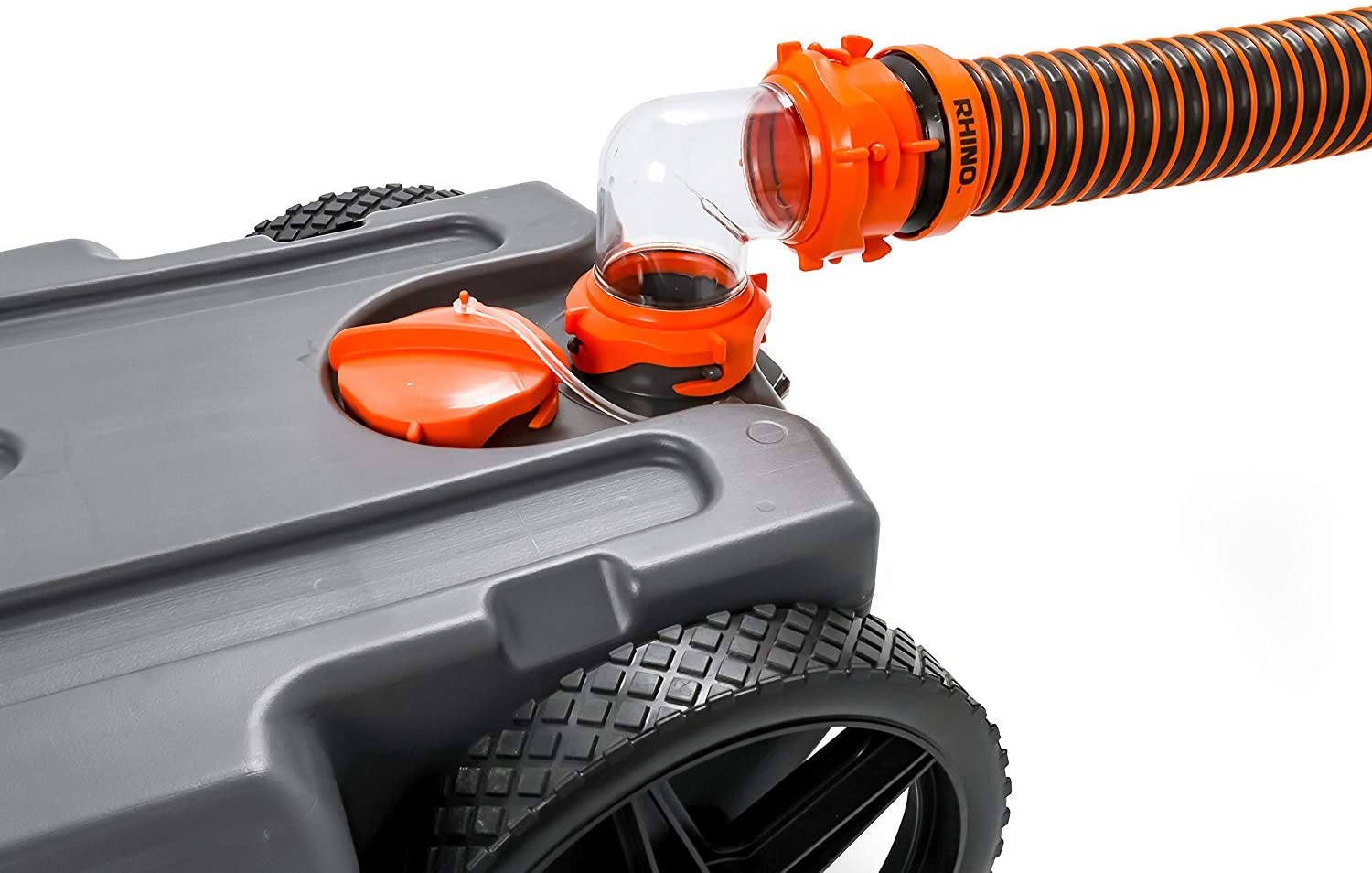
The downsize to a holding tank is of course you have to mantually carry it to the dump site. Another downside is coming into close contact with wastewater. With other systems mentioned above, the process is more or less fully automated with the exception of the compost toilet.
Lots of Options
As you can see in this post, there are lots of options of dealing with the waste water generated from living in your tiny house. The approach you take is normally dictated by where your tiny house is and the situation/legalities in that area.
When you are ready to purchase your tiny house, Tiny House Listings will walk you through the entire buying process. From helping you shop tiny houses and negotiating on your behalf, to finding financing, insurance and arranging shipping to your location.
Schedule a 5-minute tiny house consultation here.

